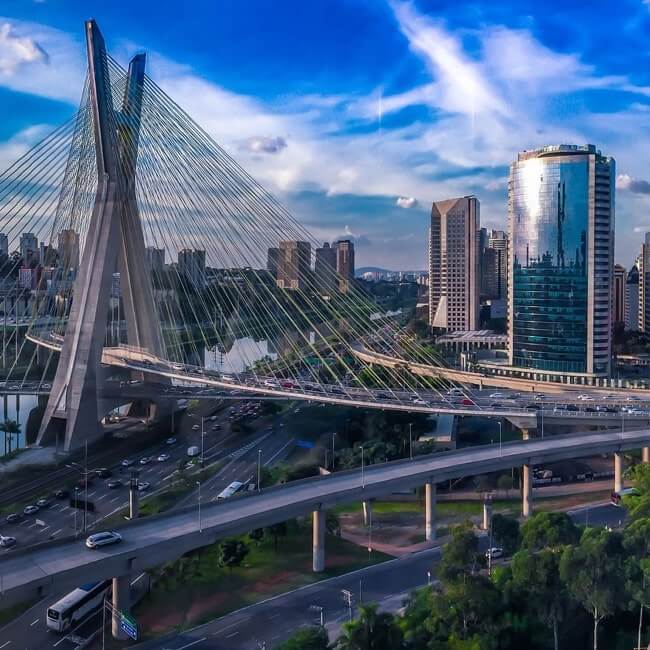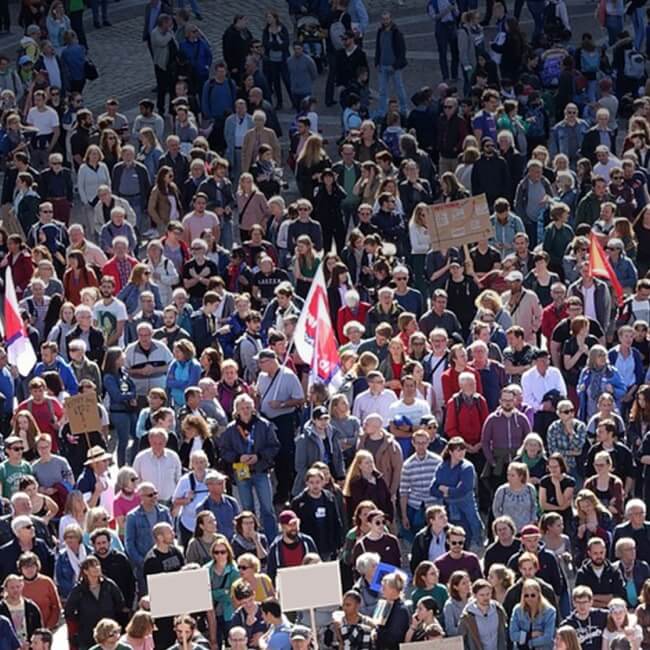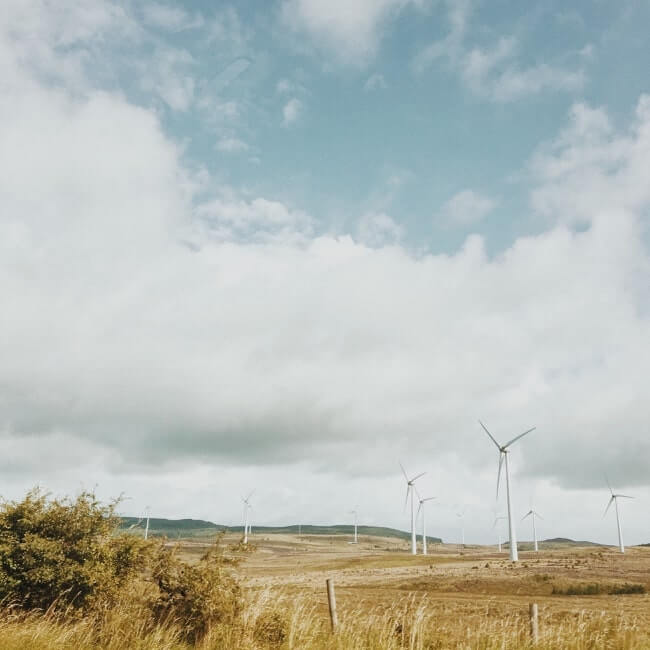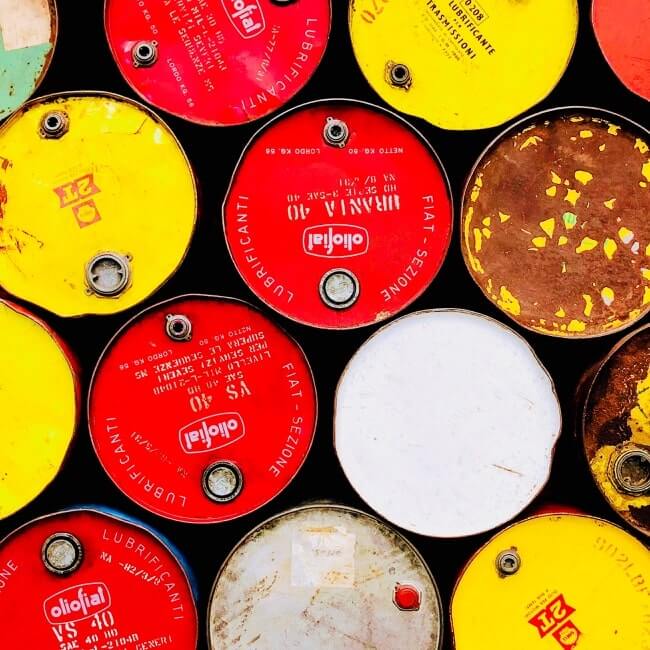AMLO's Maya train, more than just a rail project

The trans-peninsular passenger railroad, better known as Tren Maya, is one of the most important projects in the government program of Mexico's president-elect Andrés Manuel López Obrador (AMLO).
According to AMLO, the project will trigger investment and development in the southern region of the country, especially the Yucatán peninsula, one of the most overlooked in terms of infrastructure and where a large part of the population is poor.
BNamericas spoke with Rogelio Jiménez Pons – whom AMLO has appointed to head the national agency for promoting tourism, Fonatur, and who will be responsible for the development of the project – to learn more about the initiative that has been described as the one that will change completely the future of the region that harbored the Mayan civilization.
BNamericas: At what stage is the Maya train project?
Jiménez: We're in the process of developing the executive studies of the line. The route has already been determined, as well as the rights of way through which the line will pass. At this moment, our teams are beginning to prepare soil mechanics studies and those that support the development of the technical project. Another team of specialists is preparing the environmental impact demonstrations so that we can determine the impact of the project and establish the necessary mitigation measures.
BNamericas: Are you going to tender those preliminary works too?
Jiménez: No. The government has the authority to do many of them.
BNamericas: The investment will be a combination of public and private funds. How will the investment be broken down?
Jiménez: The investment is between 120bn pesos and 150bn pesos [up to US$7.95bn]. The three branches will be tendered and the composition of the funds will depend on private participation. In the sections where there is more risk on the part of the investor, the state will invest more. We estimate that the investment in the project is on average 60% private funds and 40% public funds.
BNamericas: Will concessions be launched for the operation of the line's three stretches?
Jiménez: We're in the process of defining that, since there are different modalities to carry out the bidding, especially in regard to the integration of works. It's important that the project is attractive for investors and that it also gives us long-term operational guarantees.
BNamericas: Have you estimated how the investment would be recouped?
Jiménez: According to our advisers on the subject, all over the world the construction of railway passenger lines is generally subsidized due to the social and economic benefits that they generate in the places where they are built. Fonatur will be in charge of the project because this will be combined with a real estate strategy using state land along the route. More than anything, this is a social development project. Although it's known that the Cancún-Tulum stretch can be very profitable, the rest of the route still isn't. For that reason, we're doing strategic planning in detail, for the next 50 to 100 years. The project implies an opening of new regions to tourism and development, such as when the first railway lines were built in Mexico in the 19th century.
The objective is to bring development to certain areas, especially in the southern part of the peninsula. The economic effect will be seen in the multiple large private investments to be generated in those areas due to the construction of the railway.
BNamericas: Will the railroad have a mixed use?
Jiménez: That's right. At dawn, when the train leaves Cancún, which is a dormitory city for many people who work along the Riviera Maya, some of the railcars will be especially for workers, at a reasonable cost. Later the tourist railcars would begin to circulate, where we would offer the best service and be able to charge the maximum applicable fare, obviously providing an excellent service. The journey from Cancún to Palenque will last approximately nine hours. Freight traffic would circulate at night.
BNamericas: According to official information, on two of the three stretches of the line there are already rights of way for approximately half of the route. What is the situation on the remaining section?
Jiménez: We're going to use three rights-of-way: those of the railroad that already exist, those of the roads and those of the high-voltage lines. The idea is that the project causes the least possible social and environmental impact. Any environmental effect will be mitigated with the measures to be implemented. In parallel, the government will carry out a reforestation program to recover 100,000ha in the entire region, which will also create up to 40,000 jobs.
As for the train, on some sections we'll install the existing electric power transmission lines underground and take advantage of the land where the towers that carry these lines are currently located to build the railway.
In order to involve the communities, we have already begun to consult, particularly in the Calakmul area. These groups are proposing protecting the biosphere reserve and we want to help them. We already have 90% of the rights of way assured, so the effects of the train will be minimal. AMLO is proposing to integrate the landowners and communities where the line will be built as project partners.
BNamericas: Are the stations that appear on the maps so far published for the project the definitive ones?
Jiménez: There will still be some adjustments. For example, in one of the stations, which will be located at the international airport in Cancún, we saw the need to build a transport node so that the station could connect with suburban and international buses, as well as with a light rail system in the future. The stations will have to be versatile and become important connection centers, so that they are also very profitable real estate centers. That's why we still have to define well the sites where they will be built.
BNamericas: Will the airport terminal in Cancún be financed by Asur, the airport concessionaire?
Jiménez: Yes, Asur is the ideal partner for this and the company is very interested.
BNamericas: On the Caribbean branch, the section from Cancún to Tulum, will the design prepared by Quintana Roo state government be used?
Jiménez: No. The local government's proposal was for the line to run along the middle of the highway that joins the two cities, but we are evaluating building it where the power lines are located. The proposal of the local government was very expensive and we're looking for a more economical solution.
BNamericas: Have you defined the type of technology that the train will use and the speed at which it will go?
Jiménez: Originally we had in mind a locomotive that used biodiesel and had a speed of up to 160km/h. Although the speed is to be the same, the experts are suggesting we use another type of fuel. In the first years of operation of the line, its capacity will be greater than the number of trains that will circulate on it. After 10 or 20 years, the line will be running at full capacity.
BNamericas: For the construction of the line, will local companies be given priority?
Jiménez: The idea is that the works have a local impact: first at the municipal level, then state, regional, and then national. In the case of technology related to railroads, no locomotives are built in Mexico, so in that case we will turn to international companies.
BNamericas: What will the federal and state governments invest in?
Jiménez: For the basic part of the project, the public investment will be from the federal government. Local governments will support in the preliminary stages and in the developments that will be carried out in the areas where the stations are built. And they are already doing it by paying for some of the initial studies. In addition, they will provide us with land and information on projects that they have already developed.
BNamericas: What are the estimated dates to launch the bidding and start construction and operations?
Jiménez: Preliminary construction begins in December, since sometimes the start of work is subject to complying with environmental regulations and obtaining permits, that is why we're advancing with different procedures with the state governments related to land use.
The initial tenders that will be launched in December will include the development part of the executive project.
We plan to finish the line in four years and start operating in 2023. The project must be accompanied by the development of hotels, access to archaeological sites and the construction of other tourist attractions. All this has to be launched in parallel to the train.
Subscribe to the leading business intelligence platform in Latin America with different tools for Providers, Contractors, Operators, Government, Legal, Financial and Insurance industries.
News in: Infrastructure (Mexico)

Mexico looks to expand and modernize Yucatán's Puerto de Progreso
With the expansion, Yucatán will reinforce its position as a key logistics node in the Mexican southeast and will strengthen its global connectivit...

CAMIMEX congratulates President Claudia Sheinbaum and the Federal Government team for the efforts made in tariff ma...
The mining sector reiterates its conviction that North America is the most prosperous economic region in the world thanks to the commercial and pro...
Subscribe to Latin America’s most trusted business intelligence platform.
Other projects in: Infrastructure (Mexico)
Get critical information about thousands of Infrastructure projects in Latin America: what stages they're in, capex, related companies, contacts and more.
- Project: Modernization and expansion of Puerto Tampico terminals (ex New multipurpose terminal at Tampico port)
- Current stage:

- Updated:
2 months ago
- Project: Sky Train Baja (Tijuana - Rosarito Elevated Train)
- Current stage:

- Updated:
2 months ago
- Project: Atlacomulco - Polotitlan highway
- Current stage:

- Updated:
2 months ago
- Project: Expansion of the Guadalajara International Airport
- Current stage:

- Updated:
2 months ago
- Project: Rehabilitation and Conservation of the Toll Free Highway Network in Tejupilco, Ixtapan de la Sal and Toluca (Caminos del Sur)
- Current stage:

- Updated:
2 months ago
- Project: Puerto Lázaro Cárdenas Specialized Container Terminal II (TEC II) Phase II
- Current stage:

- Updated:
2 months ago
- Project: Mi Macro Periférico Expansion
- Current stage:

- Updated:
2 months ago
- Project: New Agustín O'Horán Hospital
- Current stage:

- Updated:
2 months ago
- Project: Elevated Viaduct Playas de Tijuana
- Current stage:

- Updated:
2 months ago
- Project: Mante - Ocampo - Tula Highway (Tam-Bajío)
- Current stage:

- Updated:
2 months ago
Other companies in: Infrastructure (Mexico)
Get critical information about thousands of Infrastructure companies in Latin America: their projects, contacts, shareholders, related news and more.
- Company: Administración del Sistema Portuario Nacional Ensenada (ASIPONA Ensenada)
-
API de Ensenada, the state administrator of Mexican Baja California's Ensenada port, has the mission to manage, control, supervise, and promote port properties, services, and ac...
- Company: Grupo Total Inbas S.A. de C.V. (Grupo Total Inbas)
-
The description contained in this profile was taken directly from an official source and has not been edited or modified by BNamericas researchers, but may have been automatical...
- Company: Sistema de Transporte Colectivo Monterrey (Metrorrey)
-
Sistema de Transporte Colectivo Monterrey (Metrorrey) is a decentralized public company of the government of Mexico's Nuevo Leon State established in 1987 to build, operate, man...
- Company: Ingeniería y Gestión Hídrica S.C. (Ingeniería y Gestión Hídrica IGH)
-
The description contained in this profile was taken directly from an official source and has not been edited or modified by BNamericas researchers, but may have been automatical...
- Company: Desarrollos Mafersa S.A. de C.V. (Mafersa)
-
The description contained in this profile was extracted directly from an official source and has not been edited or modified by BNamericas researchers, but may have been machine...





